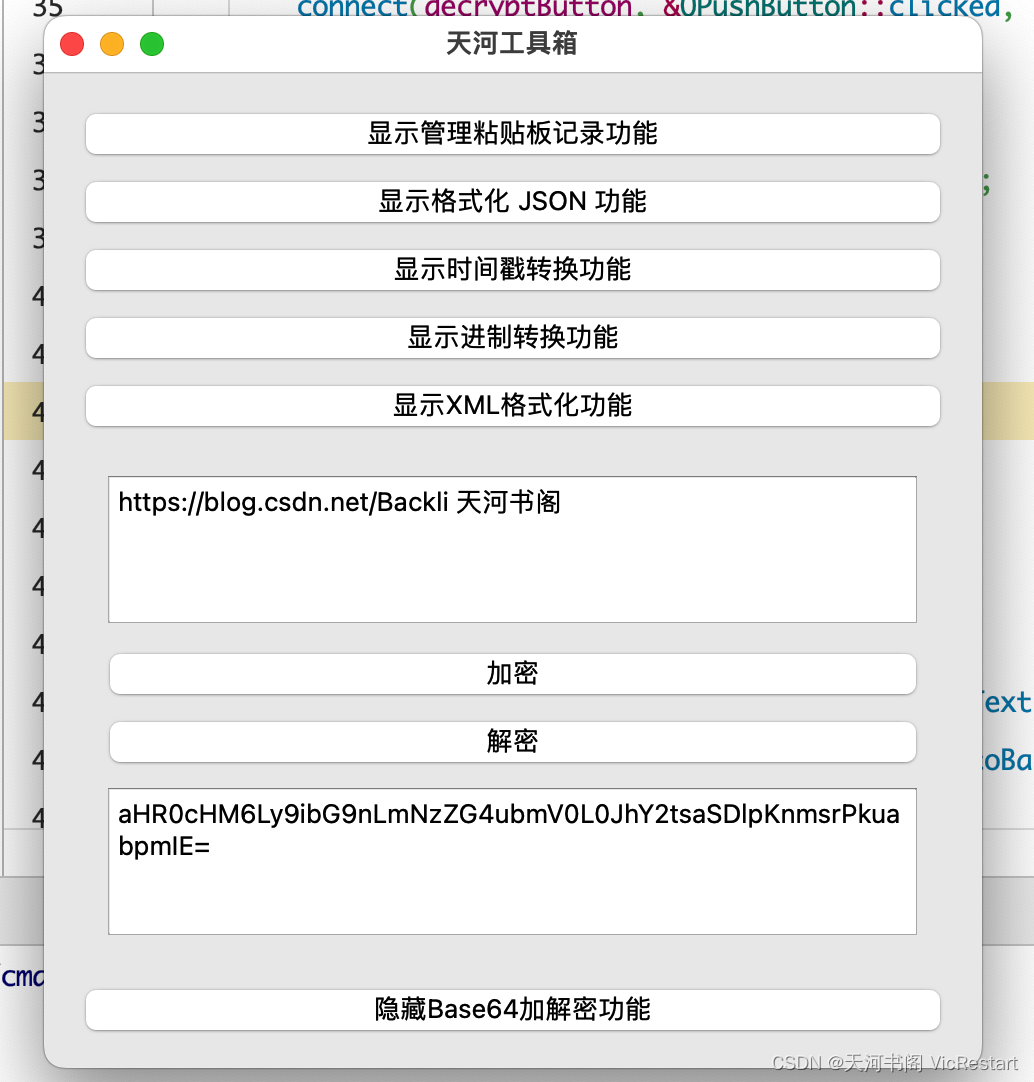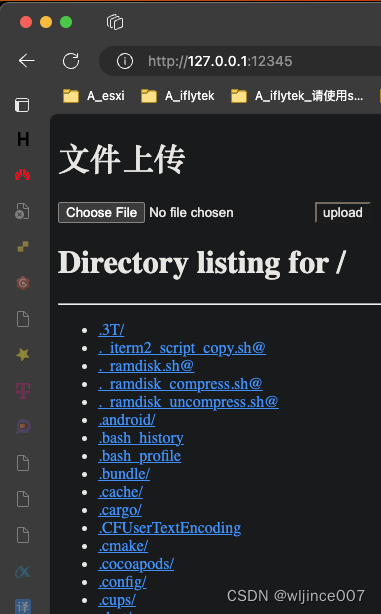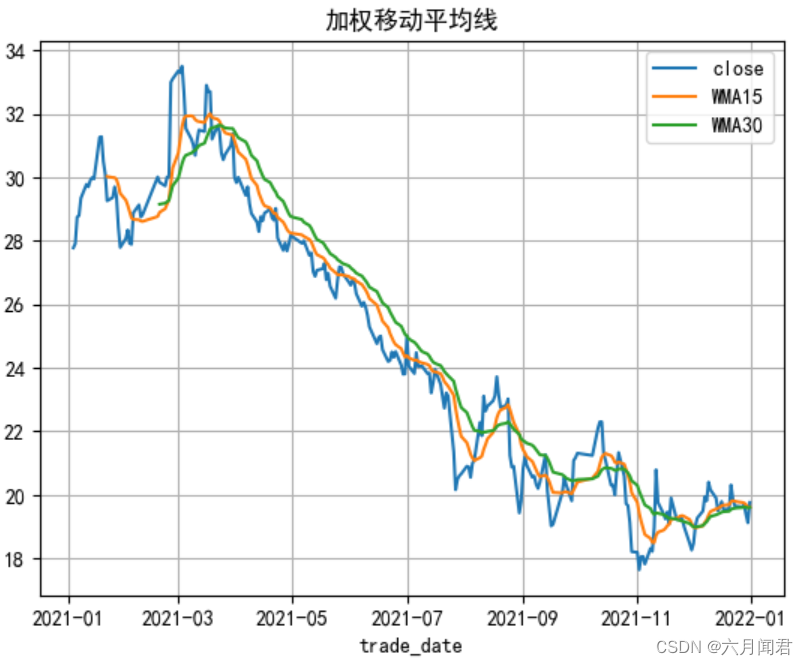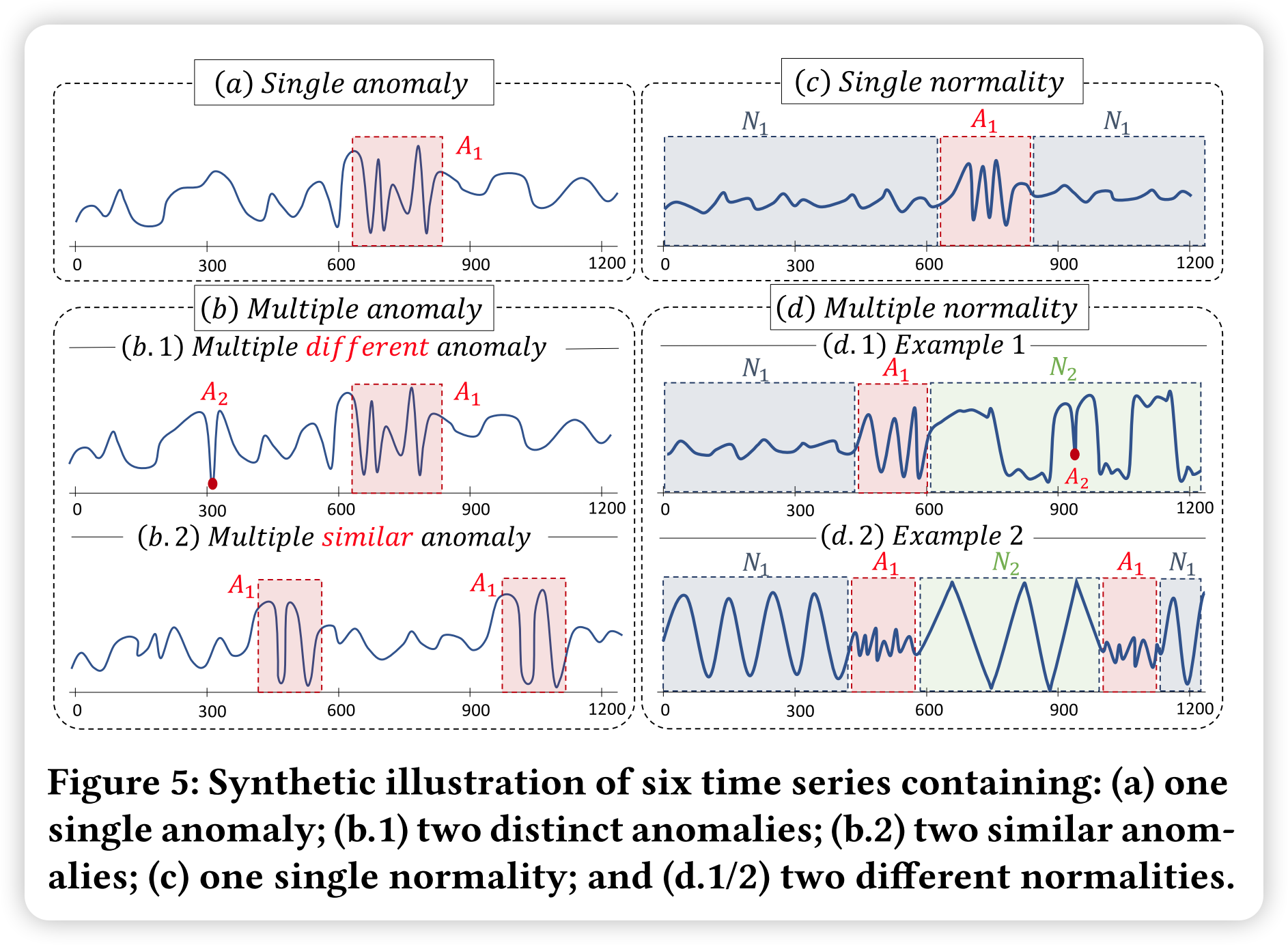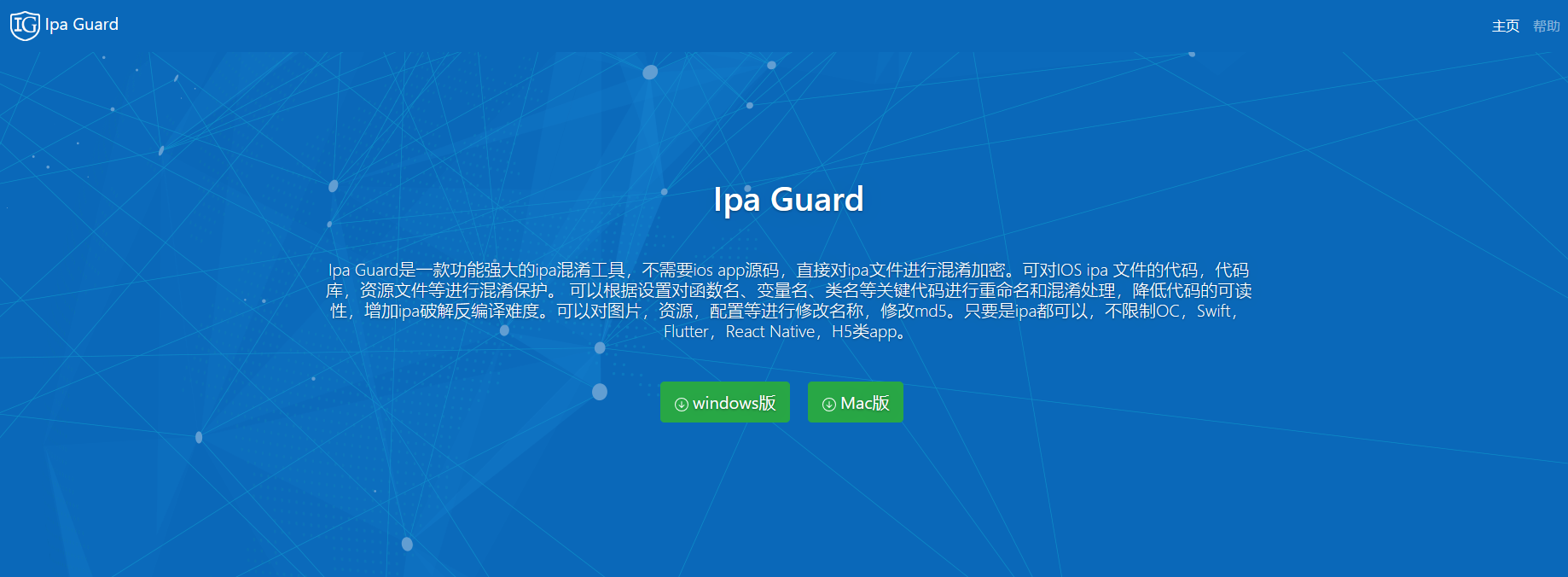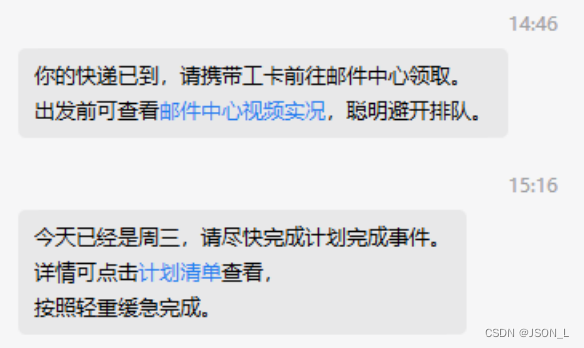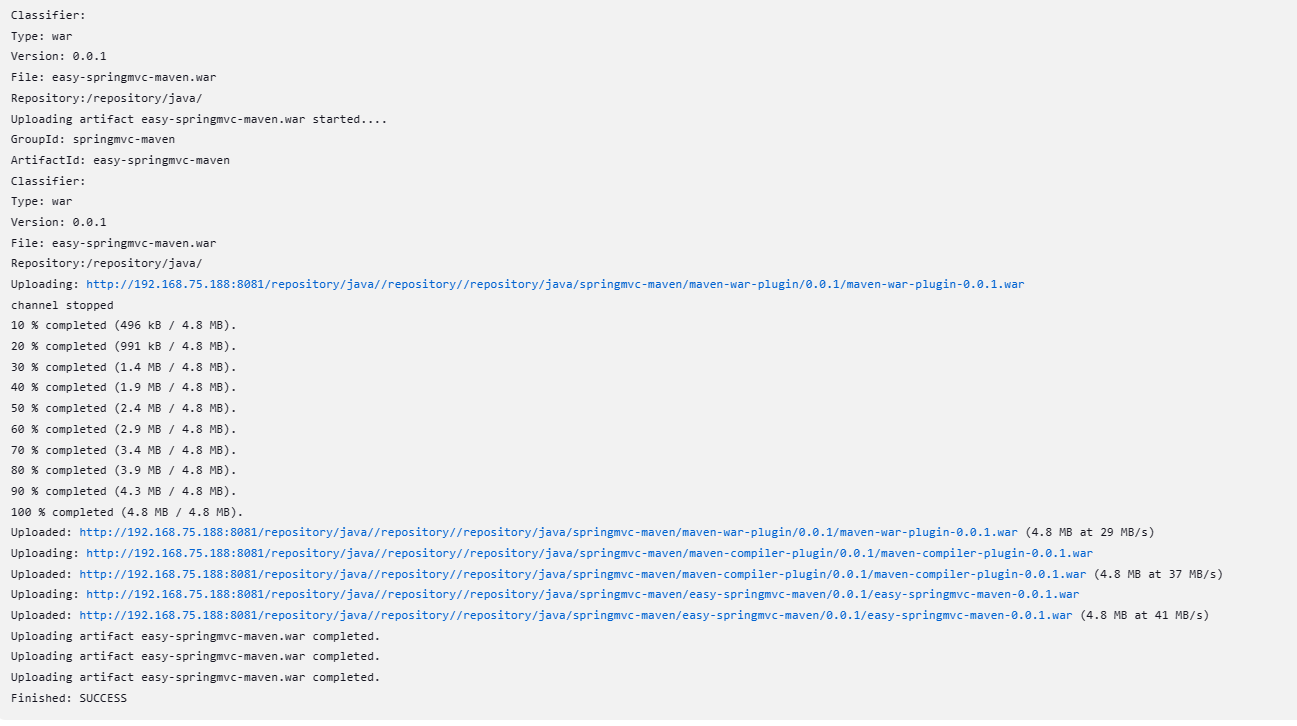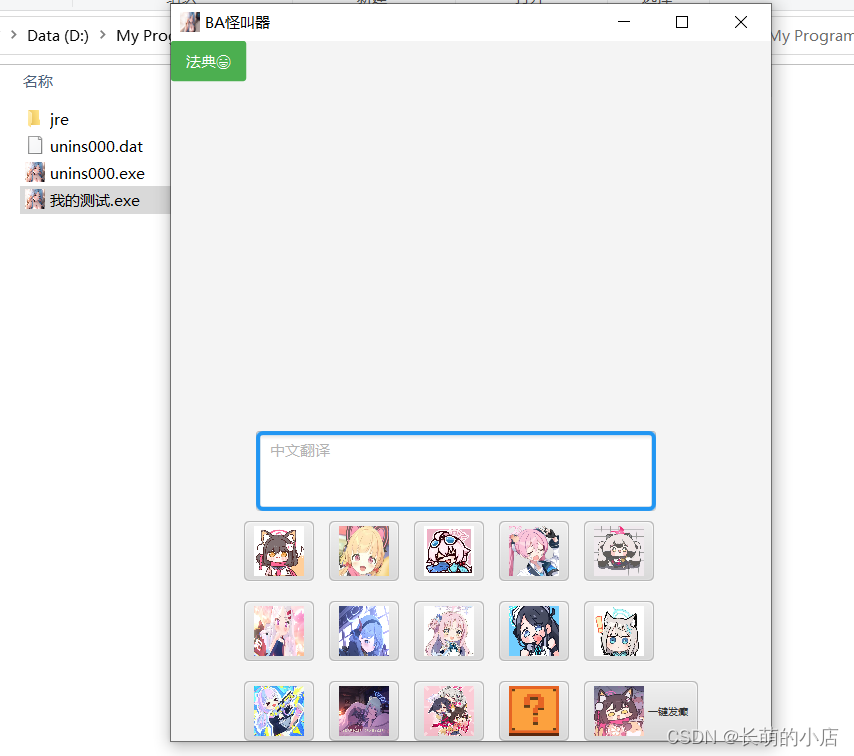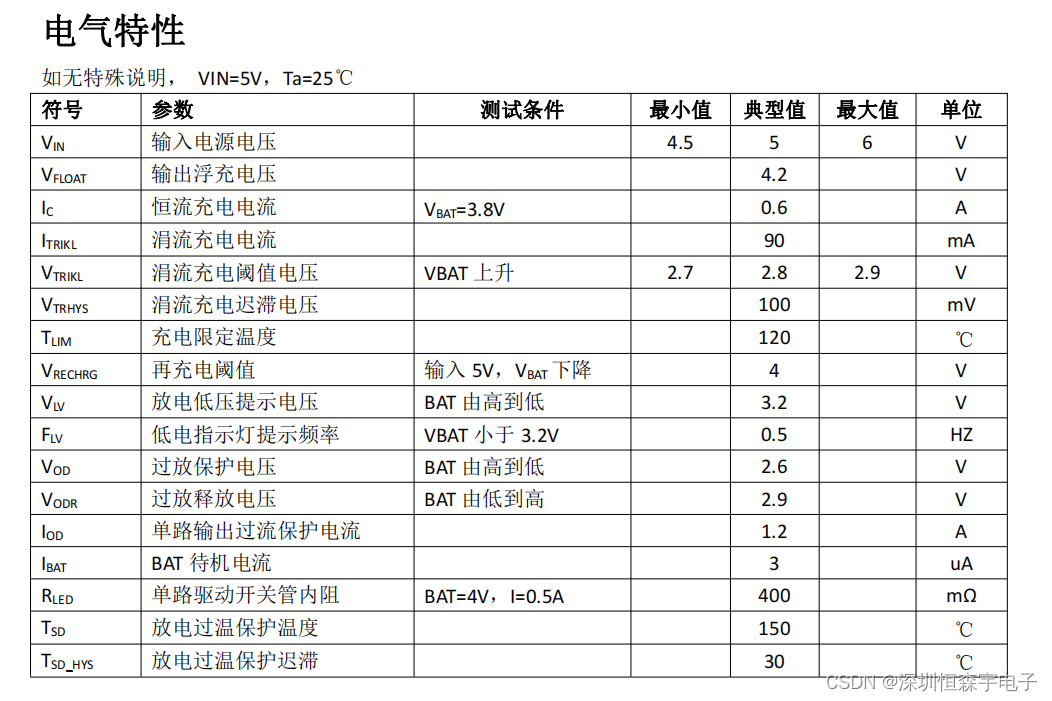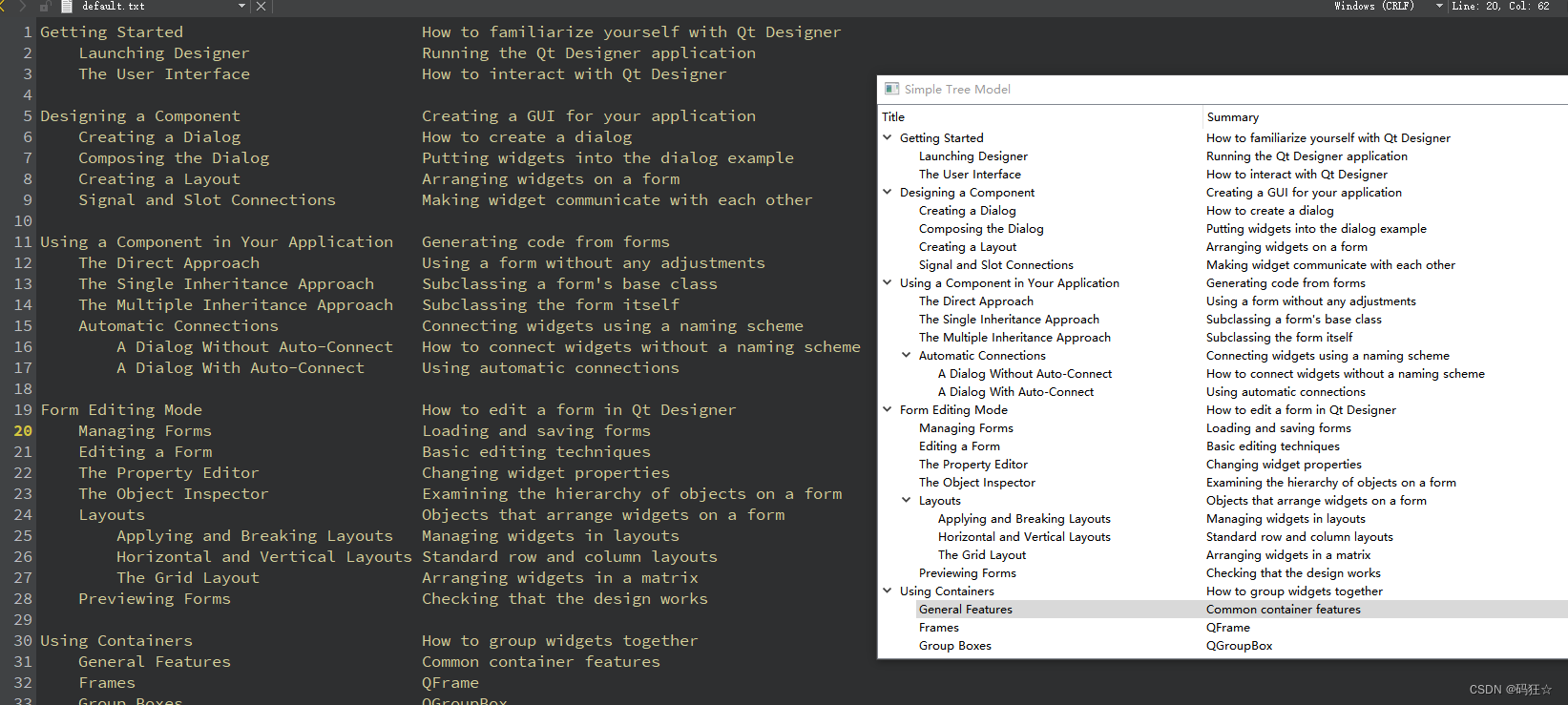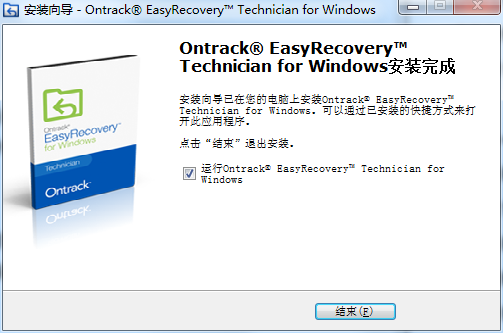文章目录
- 背景
- 示例
- LifeCycle的原理
- LifecycleOwner
- 自定义LifecycleOwner
- LifecycleObserver
- 示例改进
- 使用LifecycleService解耦Service与组件
- 整个应用进程的生命周期ProcessLifecycleOwner
背景
在Android应用程序开发中,解耦很大程度上表现为系统组件的生命周期与普通组件之间的解耦。普通组件在使用过程中通常需要依赖于系统组件的生命周期。有时候,我们不得不在系统组件的生命周期回调方法中,主动对普通组件进行调用或控制。因为普通组件无法主动获知系统组件的生命周期事件。
我们希望我们对自定义组件的管理,不依赖于页面生命周期的回调方法。同时,在页面生命周期发生变化时,也能够及时收到通知。这在组件化和架构设计中显得尤为重要。
为此,Google提供了LifeCycle作为解决方案。LifeCycle可以帮助开发者创建可感知生命周期的组件。这样,组件便能够在其内部管理自己的生命周期,从而降低模块间的耦合度,并降低内存泄漏发生的可能性。LifeCycle不只对Activity/Fragment有用,在Service和Application中也能大显身手。
示例
Android开发中,经常需要管理生命周期。举个栗子,我们需要获取用户的地址位置,当这个Activity在显示的时候,我们开启定位功能,然后实时获取到定位信息,当页面被销毁的时候,需要关闭定位功能。
internal class MyLocationListener(
private val context: Context,
private val callback: (Location) -> Unit
) {
fun start() {
// 连接系统定位服务以及其他业务
}
fun stop() {
//断开系统定位服务
}
}
class MyActivity : AppCompatActivity() {
private lateinit var myLocationListener: MyLocationListener
override fun onCreate(...) {
myLocationListener = MyLocationListener(this) { location ->
...
}
}
public override fun onStart() {
super.onStart()
myLocationListener.start()
}
public override fun onStop() {
super.onStop()
myLocationListener.stop()
}
}
虽然此示例看起来没问题,但在真实的应用中,最终会有太多管理界面和其他组件的调用,以响应生命周期的当前状态。管理多个组件会在生命周期方法(如 onStart() 和 onStop())中放置大量的代码,这使得它们难以维护。
此外,无法保证组件会在 Activity 或 Fragment 停止之前启动。在我们需要执行长时间运行的操作(如 onStart() 中的某种配置检查)时尤其如此。这可能会导致出现一种竞态条件,在这种条件下,onStop() 方法会在 onStart() 之前结束,这使得组件留存的时间比所需的时间要长。
class MyActivity : AppCompatActivity() {
private lateinit var myLocationListener: MyLocationListener
override fun onCreate(...) {
myLocationListener = MyLocationListener(this) { location ->
// update UI
}
}
public override fun onStart() {
super.onStart()
Util.checkUserStatus { result ->
// what if this callback is invoked AFTER activity is stopped?
if (result) {
myLocationListener.start()
}
}
}
public override fun onStop() {
super.onStop()
myLocationListener.stop()
}
}
Lifecycle类是一个持有组件(activity或fragment)生命周期信息的类,其他对象可以观察该状态。Lifecycle使用两个重要的枚举部分来管理对应组件的生命周期的状态:
Event:生命周期事件,由系统来分发,这些事件对应于
Activity和Fragment的生命周期函数。State:
Lifecycle对象所追踪的组件的当前状态
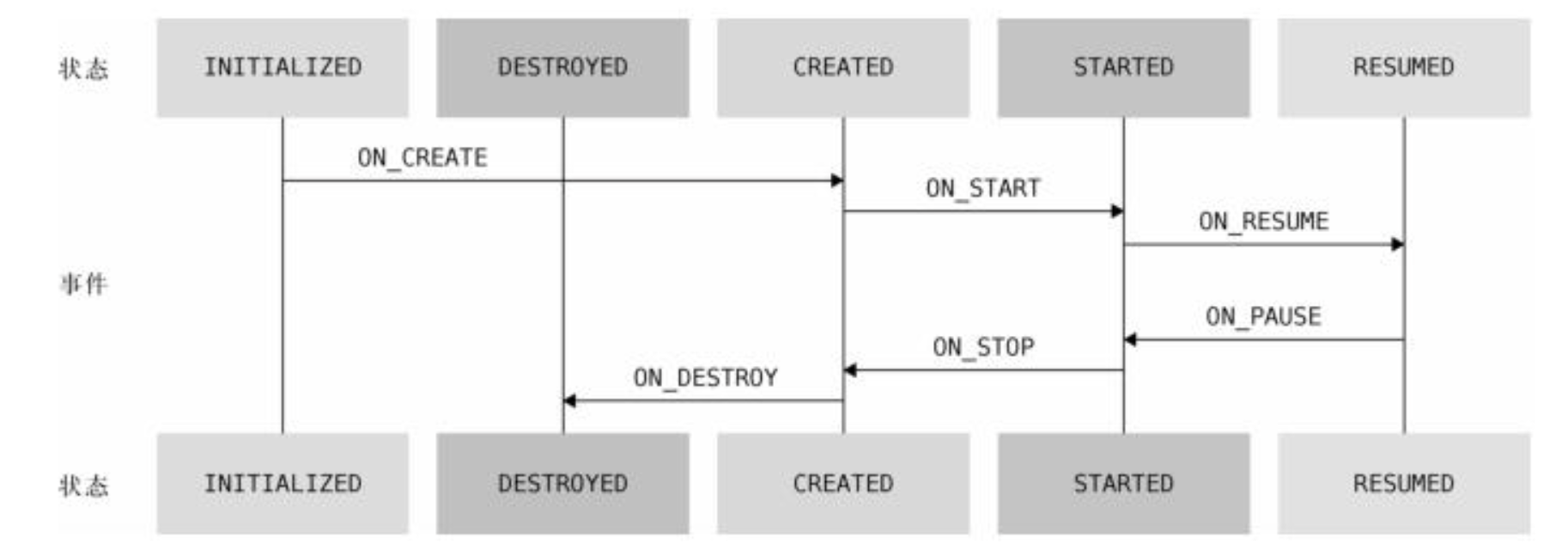
LifeCycle的原理
Jetpack为我们提供了两个类:
- LifecycleOwner: 被观察者
- LifecycleObserver: 观察者
即通过观察者模式,实现对页面生命周期的监听。
public class AppCompatActivity extends FragmentActivity implements AppCompatCallback,
TaskStackBuilder.SupportParentable, ActionBarDrawerToggle.DelegateProvider {
}
public class FragmentActivity extends ComponentActivity implements
ActivityCompat.OnRequestPermissionsResultCallback,
ActivityCompat.RequestPermissionsRequestCodeValidator {
}
public class ComponentActivity extends androidx.core.app.ComponentActivity implements
LifecycleOwner,
ViewModelStoreOwner,
SavedStateRegistryOwner,
OnBackPressedDispatcherOwner {
private final LifecycleRegistry mLifecycleRegistry = new LifecycleRegistry(this);
public Lifecycle getLifecycle() {
return mLifecycleRegistry;
}
}
public class Fragment implements ComponentCallbacks, OnCreateContextMenuListener, LifecycleOwner,
ViewModelStoreOwner, SavedStateRegistryOwner {
}
ComponentActivity和Fragment已经默认实现了LifecycleOwner接口。(代表有生命周期)
LifecycleOwner
那什么是LifecycleOwner呢?实现LifecycleOwner接口就表示这是个有生命周期的类,他有一个getLifecycle()方法是必须实现的。
//一个具有Android生命周期的类。自定义组件可以使用这些事件来处理生命周期更改,而无需在Activity或Fragment中实现任何代码。
@SuppressWarnings({"WeakerAccess", "unused"})
public interface LifecycleOwner {
/**
* Returns the Lifecycle of the provider.
*/
@NonNull
Lifecycle getLifecycle();
}
从以上源码可知,Activity和Fragment已经替我们实现了被观察者应该实现的那一部分代码。因此,我们不需要再去实现这部分代码。当我们希望监听Activity的生命周期时,只需要实现观察者那一部分的代码,即让自定义组件实现LifecycleObserver接口即可。该接口没有接口方法,无须任何具体实现。
对于前面提到的监听位置的例子。可以把MyLocationListener实现LifecycleObserver,然后在Lifecycle(Activity/Fragment)的onCreate方法中初始化。这样MyLocationListener就能自行处理生命周期带来的问题。
自定义LifecycleOwner
- 如果想在自定义的类中实现
LifecyclerOwner,就需要用到LifecycleRegistry类,并且需要自行发送Event:
class MyActivity : Activity(), LifecycleOwner {
private lateinit var lifecycleRegistry: LifecycleRegistry
override fun onCreate(savedInstanceState: Bundle?) {
super.onCreate(savedInstanceState)
lifecycleRegistry = LifecycleRegistry(this)
lifecycleRegistry.markState(Lifecycle.State.CREATED)
}
public override fun onStart() {
super.onStart()
lifecycleRegistry.markState(Lifecycle.State.STARTED)
}
override fun getLifecycle(): Lifecycle {
return lifecycleRegistry
}
}
LifecycleObserver
/**
* Marks a class as a LifecycleObserver. It does not have any methods, instead, relies on
* {@link OnLifecycleEvent} annotated methods.
* @see Lifecycle Lifecycle - for samples and usage patterns.
//-------------
* 将类标记为LifecycleObserver。它没有任何方法,而是依赖于
*{@link OnLifecycleEvent}注释的方法。
*@请参阅生命周期-了解示例和使用模式。
*/
@SuppressWarnings("WeakerAccess")
public interface LifecycleObserver {
}
注释上写的很明白,该接口依赖OnLifecycleEvent的注解方法
@Retention(RetentionPolicy.RUNTIME)
@Target(ElementType.METHOD)
public @interface OnLifecycleEvent {
Lifecycle.Event value();
}
public enum Event {
/**
* Constant for onCreate event of the {@link LifecycleOwner}.
*/
ON_CREATE,
/**
* Constant for onStart event of the {@link LifecycleOwner}.
*/
ON_START,
/**
* Constant for onResume event of the {@link LifecycleOwner}.
*/
ON_RESUME,
/**
* Constant for onPause event of the {@link LifecycleOwner}.
*/
ON_PAUSE,
/**
* Constant for onStop event of the {@link LifecycleOwner}.
*/
ON_STOP,
/**
* Constant for onDestroy event of the {@link LifecycleOwner}.
*/
ON_DESTROY,
/**
* An {@link Event Event} constant that can be used to match all events.
*/
ON_ANY
}
示例改进
class MainActivity : AppCompatActivity() {
override fun onCreate(savedInstanceState: Bundle?) {
super.onCreate(savedInstanceState)
setContentView(R.layout.activity_main)
// lifecycle是LifecycleOwner接口的getLifecycle()方法得到的
lifecycle.addObserver(MyObserver())
}
}
在Activity中只需要引用MyObserver即可,不用再关心Activity生命周期变化对该组件所带来的影响。生命周期的管理完全交给MyObserver内部自行处理。在Activity中要做的只是通过getLifecycle().addObserver()方法,将观察者与被观察者绑定起来。
class MyObserver : LifecycleObserver {
@OnLifecycleEvent(Lifecycle.Event.ON_RESUME)
fun connectListener() {
...
//填写逻辑业务代码
}
@OnLifecycleEvent(Lifecycle.Event.ON_PAUSE)
fun disconnectListener() {
...
//填写逻辑业务代码
}
}
上面的lifecycle.addObserver(MyObserver()) 的完整写法应该是aLifecycleOwner.getLifecycle().addObserver(new MyObserver())而aLifecycleOwner一般是实现了LifecycleOwner的类,比如Activity/Fragment
internal class MyLocationListener(
private val context: Context,
private val lifecycle: Lifecycle,
private val callback: (Location) -> Unit): LifecycleObserver {
private var enabled = false
@OnLifecycleEvent(Lifecycle.Event.ON_START)
fun start() {
if (enabled) {
// connect
}
}
fun enable() {
enabled = true
// 查询状态
if (lifecycle.currentState.isAtLeast(Lifecycle.State.STARTED)) {
// connect if not connected
}
}
@OnLifecycleEvent(Lifecycle.Event.ON_STOP)
fun stop() {
// disconnect if connected
}
}
- 对于组件中那些需要在页面生命周期发生变化时得到通知的方法,我们需要在这些方法上使用==
@OnLifecycleEvent(Lifecycle.Event.ON_XXX)==标签进行标识。这样,当页面生命周期发生变化时,这些被标识过的方法便会被自动调用。
LifeCycle完美解决了组件对页面生命周期的依赖问题,使组件能够自己管理其生命周期,而无须在页面中对其进行管理。这无疑大大降低了代码的耦合度,提高了组件的复用程度,也杜绝了由于对页面生命周期管理的疏忽而引发的内存泄漏问题,这在项目工程量大的情况下是非常有帮助的。
使用LifecycleService解耦Service与组件
拥有生命周期概念的组件除了Activity和Fragment,还有一个非常重要的组件是Service。为了便于对Service生命周期的监听,达到解耦Service与组件的目的,Android提供了一个名为LifecycleService的类。该类继承自Service,并实现了LifecycleOwner接口。与Activity/Fragment类似,它也提供了一个名为
getLifecycle()的方法供我们使用。
- 想要使用LifecycleService必须先增加lifecycle-service的依赖:
implementation 'androidx.lifecycle:lifecycle-service:2.3.1'
结构:
public class LifecycleService
extends Service implements LifecycleOwner
java.lang.Object
↳ android.content.Context
↳ android.content.ContextWrapper
↳ android.app.Service
↳ androidx.lifecycle.LifecycleService
源码:
public class LifecycleService extends Service implements LifecycleOwner {
private final ServiceLifecycleDispatcher mDispatcher = new ServiceLifecycleDispatcher(this);
@CallSuper
@Override
public void onCreate() {
mDispatcher.onServicePreSuperOnCreate();
super.onCreate();
}
@CallSuper
@Nullable
@Override
public IBinder onBind(@NonNull Intent intent) {
mDispatcher.onServicePreSuperOnBind();
return null;
}
@SuppressWarnings("deprecation")
@CallSuper
@Override
public void onStart(@Nullable Intent intent, int startId) {
mDispatcher.onServicePreSuperOnStart();
super.onStart(intent, startId);
}
// this method is added only to annotate it with @CallSuper.
// In usual service super.onStartCommand is no-op, but in LifecycleService
// it results in mDispatcher.onServicePreSuperOnStart() call, because
// super.onStartCommand calls onStart().
@CallSuper
@Override
public int onStartCommand(@Nullable Intent intent, int flags, int startId) {
return super.onStartCommand(intent, flags, startId);
}
@CallSuper
@Override
public void onDestroy() {
mDispatcher.onServicePreSuperOnDestroy();
super.onDestroy();
}
@Override
@NonNull
public Lifecycle getLifecycle() {
return mDispatcher.getLifecycle();
}
}
整个应用进程的生命周期ProcessLifecycleOwner
具有生命周期的系统组件除Activity、Fragment、Service外,还有Application。很多时候,我们会遇到这样的需求:我们想知道应用程序当前处在前台还是后台,或者当应用程序从后台回到前台时,我们能够得到通知。有不少方案能够实现该需求,但都不够好。在此之前,Google并没有为该需求提供官方解决方案,直到LifeCycle的出现。
- 需要先添lifecycle-process的依赖:
implementation 'androidx.lifecycle:lifecycle-process:2.3.1'
源码:
/**
* Class that provides lifecycle for the whole application process.
* <p>
* You can consider this LifecycleOwner as the composite of all of your Activities, except that
* {@link Lifecycle.Event#ON_CREATE} will be dispatched once and {@link Lifecycle.Event#ON_DESTROY}
* will never be dispatched. Other lifecycle events will be dispatched with following rules:
* ProcessLifecycleOwner will dispatch {@link Lifecycle.Event#ON_START},
* {@link Lifecycle.Event#ON_RESUME} events, as a first activity moves through these events.
* {@link Lifecycle.Event#ON_PAUSE}, {@link Lifecycle.Event#ON_STOP}, events will be dispatched with
* a <b>delay</b> after a last activity
* passed through them. This delay is long enough to guarantee that ProcessLifecycleOwner
* won't send any events if activities are destroyed and recreated due to a
* configuration change.
*
* <p>
* It is useful for use cases where you would like to react on your app coming to the foreground or
* going to the background and you don't need a milliseconds accuracy in receiving lifecycle
* events.
*/
/**
翻译:
*为整个应用程序流程提供生命周期的类。
*您可以将此LifecycleOwner视为所有活动的组合,除了
*{@link Lifecycle。事件#ON_CREATE}将被调度一次,并且{@linkLifecycle。事件#ON_DESTROY}
*永远不会被派遣。其他生命周期事件将按照以下规则进行调度:
*ProcessLifecycleOwner将调度{@link Lifecycle。事件#ON_START},
*{@linkLifecycle.Event#ON_RESUME}事件,作为第一个活动在这些事件中移动。
*{@link Lifecycle。Event#ON_PAUSE},{@link Lifecycle。Event#ON_STOP},事件将与上次活动后的a延迟穿过他们。此延迟足够长,可以保证ProcessLifecycleOwner
*如果活动由于配置更改。
*它适用于您希望对应用程序进入前台或
*进入后台,在接收生命周期中不需要毫秒的准确性事件。
*/
@SuppressWarnings("WeakerAccess")
public class ProcessLifecycleOwner implements LifecycleOwner {
ProcessLifecycleOwner的使用方式与Activity、Fragment和Service是类似的,其本质也是观察者模式。由于我们要观察的是整个应用程序,因此,需要在Application中进行相关代码的编写。
class StApplication : Application() {
companion object {
private lateinit var instance: Application
fun getInstance() = instance
}
override fun onCreate() {
super.onCreate()
instance = this
ProcessLifecycleOwner.get().lifecycle.addObserver(MyApplicationObserver())
}
}
class MyApplicationObserver : LifecycleObserver {
@OnLifecycleEvent(Lifecycle.Event.ON_CREATE)
fun onCreate() {
}
// 前台出现时调用
@OnLifecycleEvent(Lifecycle.Event.ON_START)
fun onStart() {
Log.e("xoliu", "onStart")
}
// 前台出现时调用
@OnLifecycleEvent(Lifecycle.Event.ON_RESUME)
fun onResume() {
Log.e("xoliu", "onResume")
}
// 退出到后台时调用
@OnLifecycleEvent(Lifecycle.Event.ON_PAUSE)
fun onPause() {
Log.e("xoliu", "onPause")
}
// 退出到后台时调用
@OnLifecycleEvent(Lifecycle.Event.ON_STOP)
fun onStop() {
Log.e("xoliu", "onStop")
}
}
-
当应用程序从后台回到前台,或者应用程序被首次打开时,会依次调用
Lifecycle.Event.ON_START和Lifecycle.Event.ON_RESUME。 -
当应用程序从前台退到后台(用户按下Home键或任务菜单键),会依次调用
Lifecycle.Event.ON_PAUSE和Lifecycle.Event.ON_STOP。需要注意的是,这两个方法的调用会有一定的延后。这是因为系统需要为“屏幕旋转,由于配置发生变化而导致Activity重新创建”的情况预留一些时间。也就是说,系统需要保证当设备出现这种情况时,这两个事件不会被调用。因为当旋转屏幕时,你的应用程序并没有退到后台,它只是进入了横/竖屏模式而已。
